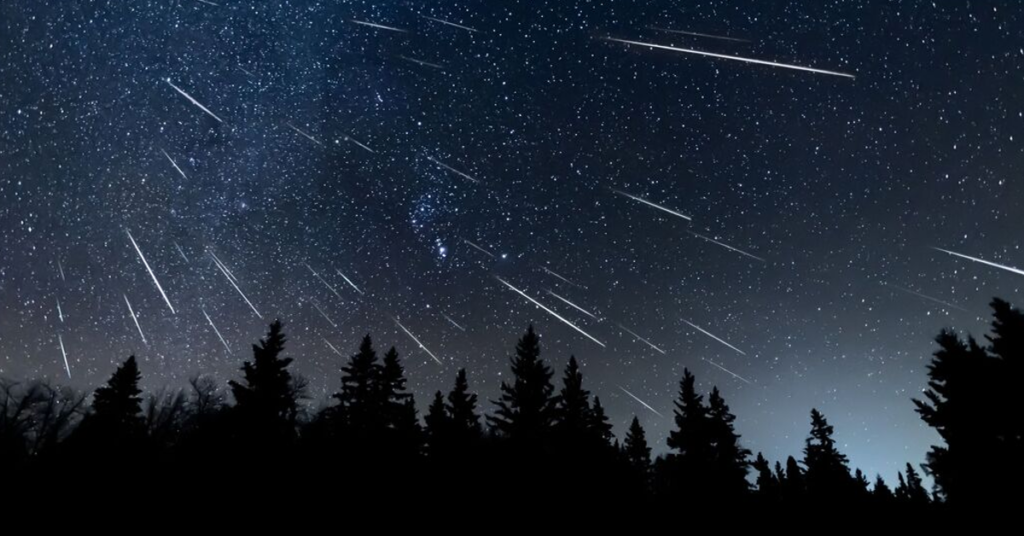
Orionid Meteor Shower to Dazzle UK Skies Tonight
Skywatchers across the UK are in for an astronomical treat tonight as the Orionid meteor shower reaches its peak, promising a stunning display of shooting stars. This celestial event is one of the highlights of the stargazing calendar, with up to 25 meteors per hour expected to streak across the night sky.
The Orionid meteor shower occurs annually as Earth passes through the debris left behind by Halley’s Comet. As tiny particles of this debris enter our atmosphere, they create bright streaks of light as they burn up, producing the awe-inspiring shooting stars we can see from the ground. Emerging from the famous Orion constellation, these meteors are known for their speed and brightness, making the display a must-see for stargazers.
When is the Best Time to Watch the Orionids?
The peak of the Orionid meteor shower will occur tonight, with the best viewing opportunities between midnight and the early hours of tomorrow morning. While meteors can be spotted throughout the night, this is when activity will be at its highest, with the potential to see up to 25 meteors each hour.
For those eager to catch a glimpse, no special equipment is needed. Simply head outside, find a dark spot away from artificial lights, and look up to the eastern sky, where Orion will be rising. Give your eyes about 20 minutes to adjust to the darkness for the best possible view.
Clear Skies Over Much of the UK
Stargazers are in luck this year, with clear skies forecast over most parts of England, Wales, and parts of Scotland. This should provide ideal conditions for watching the Orionids in all their glory. For those in areas where cloud cover may be present, be sure to check local weather forecasts to find the best windows for viewing.
Why the Orionids Are Special
The Orionid meteor shower is considered one of the most reliable and active meteor showers of the year. The meteors move at incredible speeds of up to 66 km per second, and while most are faint, a few bright fireballs can occasionally be spotted, making the display even more spectacular.
As you watch the meteors fly by, it’s worth remembering that these fragments of Halley’s Comet have travelled through space for thousands of years before entering Earth’s atmosphere. It’s a humbling reminder of the vastness of the universe and the beauty of our night sky.
How to Maximise Your Viewing Experience
- Find a Dark Spot: Avoid areas with too much artificial light, such as street lamps or illuminated buildings.
- Give Your Eyes Time: Allow 20 minutes for your eyes to adjust to the darkness for optimal viewing.
- Bundle Up: Temperatures can drop during the night, so make sure to dress warmly.
- Be Patient: While the peak is expected late tonight, meteors can appear at any time once it’s dark.
Whether you’re a seasoned astronomer or just a casual stargazer, the Orionid meteor shower is a fantastic opportunity to connect with the night sky. So, grab a blanket, head outside, and enjoy the cosmic show tonight!
















